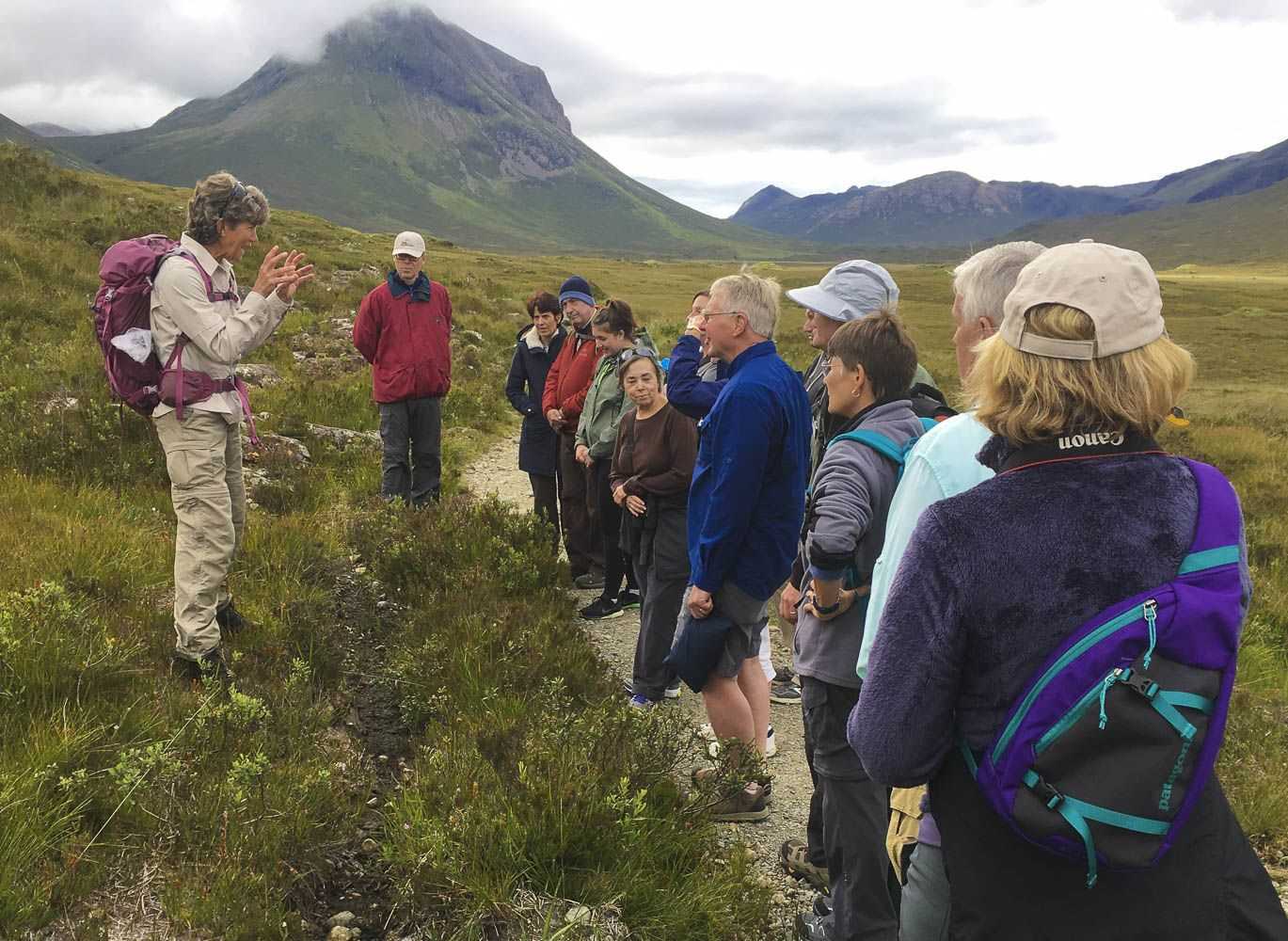We began our day on the mainland with a visit to Plockton, a fishing village created at the time of the Highland Clearances. The village provided alternative employment for families evicted from the land by local landowners, who were replacing their tenants with more profitable sheep. The fishery initially flourished with an abundance of herring but it declined rapidly when the herring were fished out. Today the village is an up-market holiday destination with a reputation for good food and simple and charming accommodation.
The early morning sunshine and high tide provided perfect conditions for our keen photographers. We moved on to Eilean Donan and visited what is said to be the most photographed castle in Scotland. Its familiarity derives from movies like The Scarlet Pimpernel, which was filmed on location here. In its current form it dates from the opening decades of the 20th century and is thus representative of a Scottish Revival style that evolved alongside the Arts and Crafts movement. Originally the site of a Celtic anchorite’s cell, the castle name means Donan’s Isle, from the name of the sixth-century saint. It was rebuilt by a descendant of the Macrae clan and inaugurated in the 1920s. With its natural tidal moat and mock mediaeval causeway, the castle is a photographer’s heaven.
Guests who chose not to visit Eilean Donan took the coach over the Skye Bridge for a morning hiking in the Cuillins. These celebrated mountains on Skye attract hill walkers internationally.
Over lunch we sailed through the Kyle of Lochalsh, the narrow channel that separates the Isle of Skye from the mainland. Our destination on Skye was the Clan Donald Centre at Armadale to visit the excellent Museum of the Isles of Skye, where we had an introduction to the complexities of history as it has unfolded in the Scottish Highlands. We explored the gardens and came across a number of specimen trees that were brought back to Scotland from the New World by a celebrated generation of Scottish plant collectors. They included a Nootka Cypress and an early monkey tree that was originally from Chile.
As the weather and conditions were so fine, we sailed out to Canna for our overnight berthing. Canna is the outermost of the Small Isles archipelago and our access to the island depends largely on the weather. The National Trust for Scotland cares for the island. Canna House, the home of the celebrated Gaelic scholar John Lorne Campbell, was bequeathed to the Trust in the 1980s. There is an impressive Celtic Christian site associated with St Columba and a small pub. We gathered there after dinner to enjoy the late setting of the sun to close a full, but rewarding, day.









